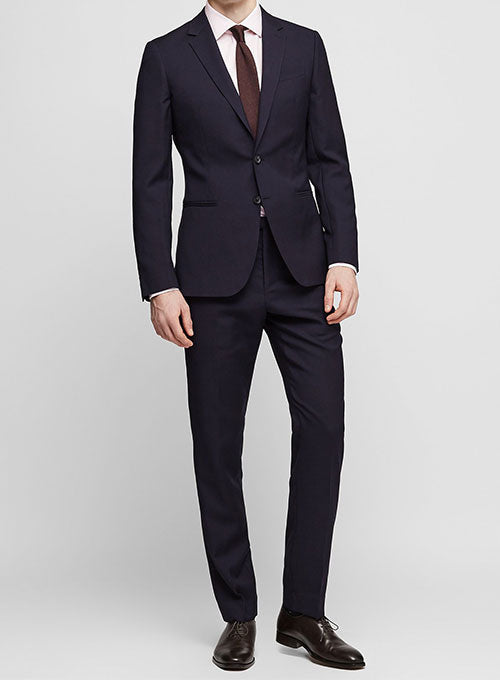Tailor Tuxedos Perth: Custom Tuxedos for Special Occasions
Tailor Tuxedos Perth: Custom Tuxedos for Special Occasions
Blog Article
Understanding the Tailoring Process: From Fabric Choice to Final Fitting for the Suitable Wardrobe
The tailoring procedure is a complicated interplay of art and science, beginning with the essential choice of textile choice and culminating in the specific changes of final fittings. Each textile type brings unique qualities that affect not only the aesthetic allure but also the garment's long life and suitability for numerous events.
Significance of Fabric Choice
Choosing the ideal fabric is crucial in the customizing process, as it straight influences the convenience, toughness, and overall visual of the final garment. The option of fabric establishes the foundation for the garment's efficiency, functionality, and design. Different materials possess special residential properties, such as breathability, stretch, and weight, which can significantly influence how the garment drapes and fits the body.

A tailored item made from an ideal material not just showcases workmanship however also boosts the user's confidence. Consequently, recognizing the subtleties of material selection is extremely important for any type of tailoring undertaking. It makes certain that the end product not just meets the visual needs of the client but additionally aligns with useful demands, thereby accomplishing a harmonious equilibrium between type and function in the tailored closet.
Sorts Of Fabrics and Their Usages
Comprehending the various kinds of textiles offered is vital for making notified choices during the customizing procedure. Each material has distinct features that dictate its viability for specific garments and events.
Cotton, known for its breathability and gentleness, is ideal for sportswear and summer season clothes. Its versatility permits it to be customized into whatever from t shirts to dresses. Woollen, on the various other hand, is preferred for its warmth and structure, making it a superb choice for official suits and outerwear. Its all-natural flexibility aids garments maintain shape gradually.
Silk radiates high-end and is light-weight, making it excellent for eveningwear and delicate blouses; however, it needs cautious handling because of its fragility. Linen, with its textured surface, is a prominent selection for cozy environments, giving a crisp and ventilated feeling, yet it wrinkles easily, which might influence the garment's look.
Artificial textiles, such as polyester and nylon, deal durability and resistance to wrinkles, making them suitable for everyday wear and active clothing. Understanding these fabric kinds and their residential or commercial properties enables much better decision-making, guaranteeing that each tailored piece not only fits well yet additionally straightens with the designated function and event.
The Tailoring Techniques Discussed
The art of customizing depends on a selection of methods that change textile into well-fitted garments. Central to this procedure is pattern composing, where a dressmaker creates layouts based upon the customer's measurements and preferred design. This initial step makes sure that the garment will certainly fit the user properly prior to any type of cutting takes place.
Once patterns are established, cutting techniques come right into play. Precision is vital as errors can lead to misfitting garments. Tailors often make use of different cutting approaches, such as single-layer reducing for intricate layouts and multiple-layer cutting for efficiency on typical patterns.
Basting is one more important strategy, enabling tailors to briefly stitch material assemble for this contact form a preliminary installation (bespoke tailor perth). This method uses the opportunity to examine the drape and overall shape before final sewing
Seaming techniques, consisting of flat-felled joints and French seams, boost the garment's sturdiness and visual charm. Tailors also utilize techniques such as interfacing and cushioning to give structure and form to details areas, like collars and shoulders.
Finally, ending up techniques, consisting of hemming and side ending up, guarantee the garment's long life while providing a refined appearance. With each other, these techniques develop the foundation of reliable tailoring, leading to charming, tailor-made garments.

Fitting Adjustments and Factors To Consider
After the preliminary tailoring strategies have actually been applied and the garment is constructed, suitable adjustments become extremely important to accomplishing the ideal fit. These adjustments resolve different aspects of the garment, guaranteeing it contours to the wearer's body form and improves overall look.

The surge of pants is an additional critical factor; it should sit easily above the hips without triggering discomfort, allowing for ease of movement. Hemming lengths for both trousers and skirts should show the wearer's preferred style while appreciating percentages.
Additionally, interest must be offered to the back of the garment, guaranteeing that there are no unpleasant pulls or excess fabric - wedding suits perth. Each modification ought to be carefully considered, as also small modifications can significantly influence the total fit and aesthetic of the tailored item, eventually leading to a closet that emanates confidence and sophistication
Keeping Your Tailored Clothing
Always adhere to the care tag guidelines, which may recommend completely dry cleaning for fragile fabrics or equipment washing for more sturdy materials. additional hints Prevent frequent laundering, as this can use down the textile and alter the garment's shape.
Storage space is equally crucial; usage cushioned hangers for jackets and layers to keep shoulder structure, and shop pants folded up neatly or hung to stop creasing. Protect garments from direct sunshine, which can discolor shades and damage fibers.
Additionally, periodic evaluations for minor repair services can stop bigger problems. Inspect for loosened buttons, fraying seams, or signs of moth damage, addressing these problems promptly to maintain the garment's stability.
Finally, think about seasonal rotation. Wearing tailored items in small amounts enables materials to recuperate, extending their lifespan. By implementing these upkeep methods, you can make sure that your tailored garments remain top article as pristine as the day you first wore them, boosting your suitable closet for many years to come.
Verdict
The customizing procedure, including textile selection, proficient techniques, and exact suitable modifications, plays a critical role in producing garments that boost both comfort and style. Recognizing the importance of upkeep extends the life of tailored garments, strengthening their worth in a well-curated wardrobe.
Report this page